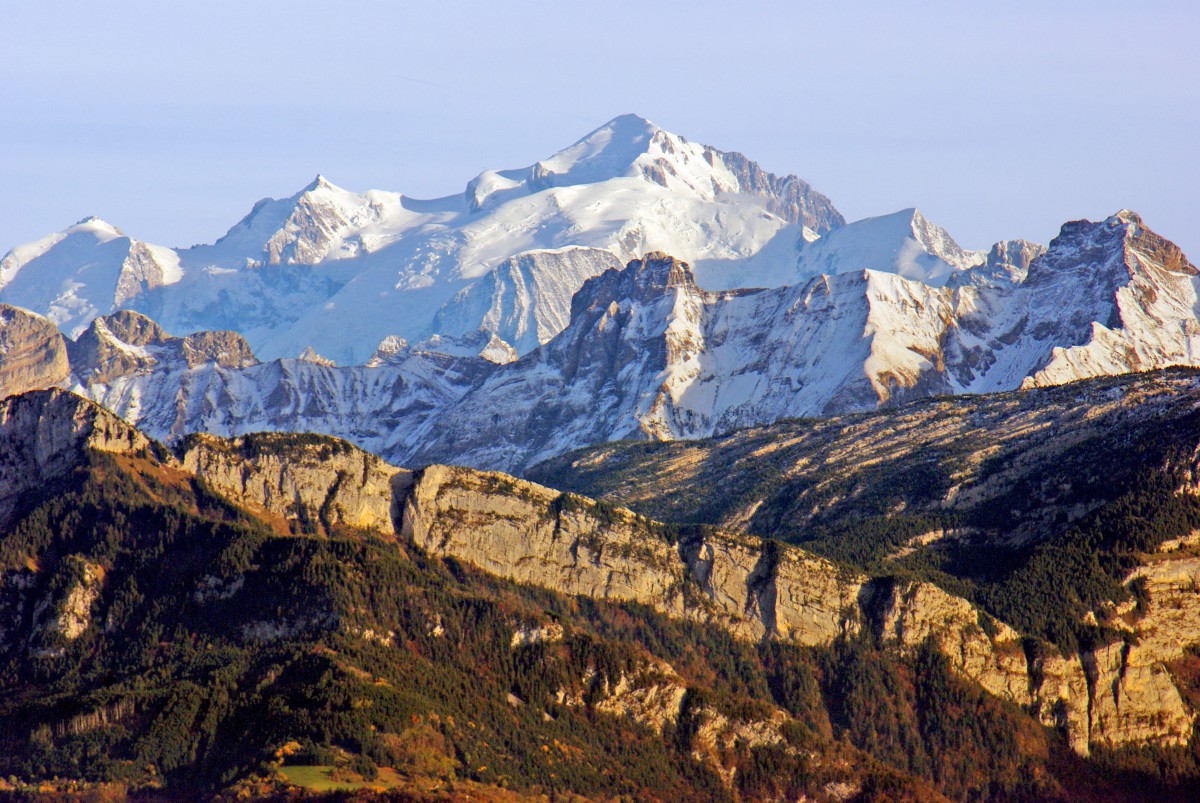Walking underneath dramatic glaciers and snow-capped peaks, strolling in the picture-perfect old towns and villages, tasting the delicious mountain cheese while relaxing on the shores of alpine lakes, the French Alps have much to offer to its visitors.
Although crowded in winter, this part of France is often bypassed by English-speaking tourists in summer who traditionally prefer popular destinations such as Paris, Provence, the South-West and the Loire. Nevertheless, the true beauty of the mountains, with their inspiring and spectacular settings, make them a good reason to visit the area. Extending from Lake Geneva to the Mediterranean Sea in Nice, the French Alps show a diversity of landscapes, traditions and gastronomy, as well as various cultural and sports activities.
Description of the French Alps
Limits of the French Alps
The French Alps extend 180km from Lake Geneva on the Swiss border in the north to Nice and the Italian border in the south. Switzerland and Italy border its eastern side.
Two administrative regions share the vast mountain territory:
- Auvergne Rhône-Alpes to the north and,
- Provence-Alpes-Côte d’Azur (PACA) to the South.
The French Alps are included partly or wholly in eight départements:
- Haute-Savoie (74, Annecy),
- Savoie (73, Chambéry),
- Isère (38, Grenoble),
- Hautes-Alpes (05, Gap),
- Alpes-de-Haute-Provence (04, Digne-les-Bains),
- Alpes Maritimes (06, Nice),
- Drôme (26, Valence), and
- Var (83, Toulon).
Many historic provinces comprise this vast mountainous area: Savoie, Dauphiné, Provence, and the County of Nice.
The Alps in general
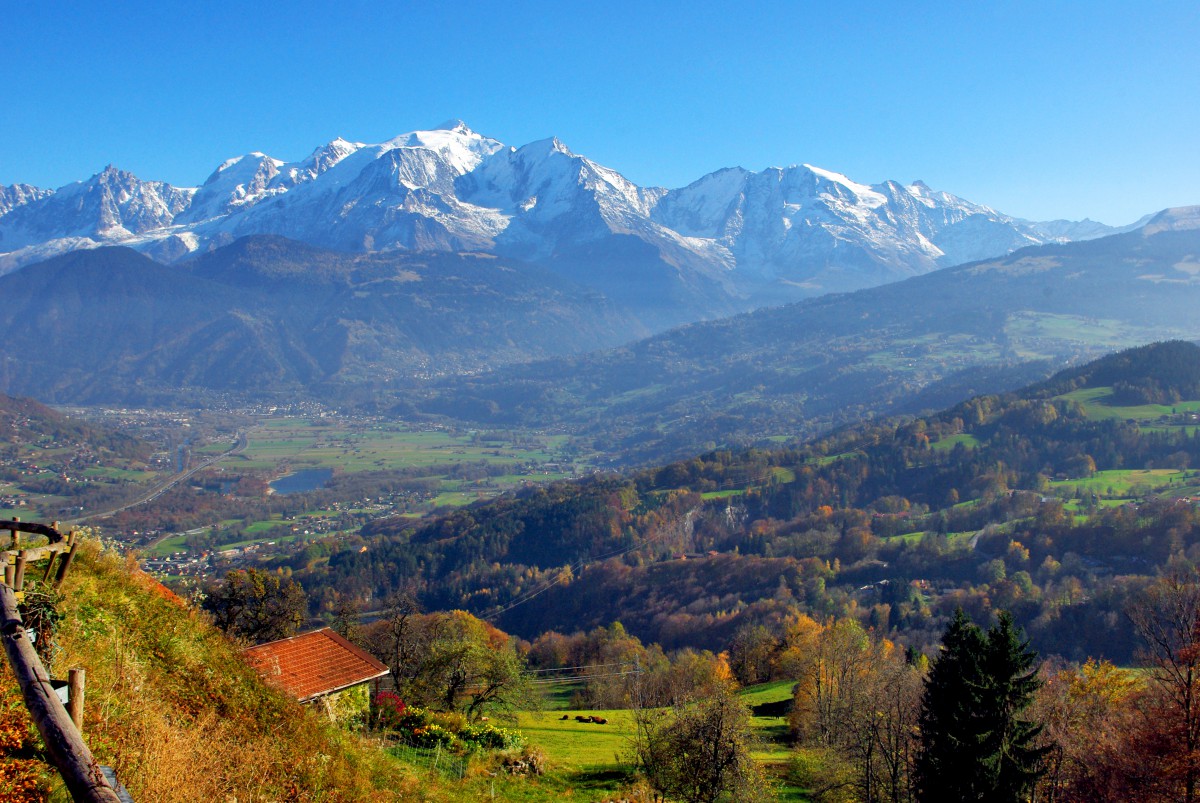
The French Alps are part of the greater mountain range of the Alps, which stretch in a crescent shape 1,200 kilometres (700 miles) from Nice to Vienna across seven countries: Austria, Slovenia, Italy, Switzerland, Liechtenstein, Germany, and France.
The highest mountain of the Alps is Mont Blanc (4,810m), situated on the French-Italian border. From the Danube to the Mediterranean Sea, 82 summits are reaching an altitude of at least 4,000 metres (48 in Switzerland, 38 in Italy and 24 in France).
Alpine mountain passes
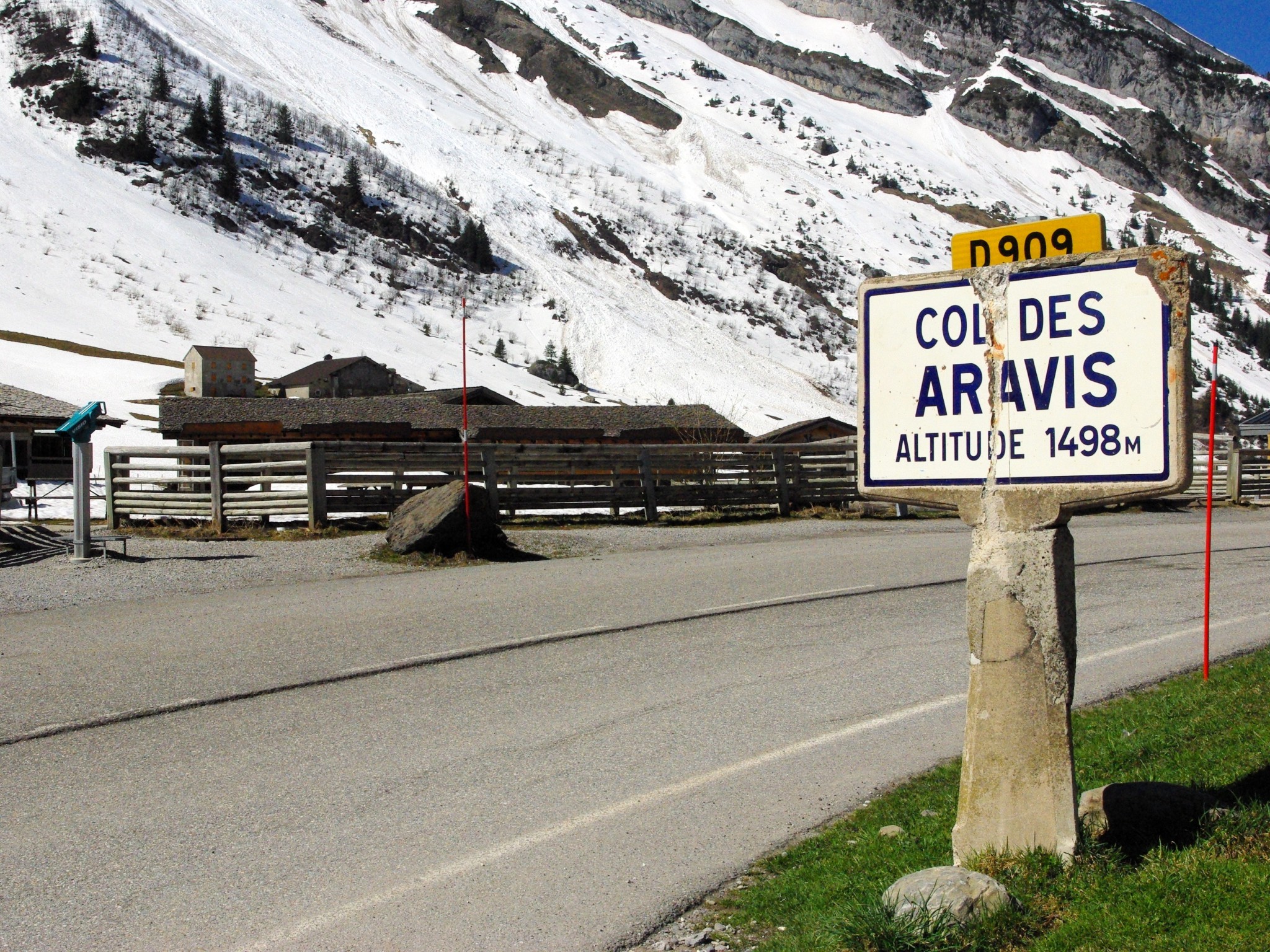
Many mountain passes linking valleys or countries with altitudes greater than 1,000 metres are regularly climbed by the prestigious Tour de France bicycle race.
Alpine passes played a great part in the mountain’s history, from the Roman era to the Middle Ages and from the Napoleonic Wars to World War Two.
Find out more about the great mountain road passes of the French Alps.
The Alps: Europe’s Reservoir

The Alps are known as Europe’s Reservoir thanks to the great rivers that rise from their glaciers: the Rhine, the Rhône, the Po, the Inn, the Ticino, and the Adige.
In France, the great rivers of the Alps are the Rhône, the Arve, the Isère, the Arc, the Romanche, the Drac, the Drôme, the Durance, the Verdon, the Var and the Vésubie.
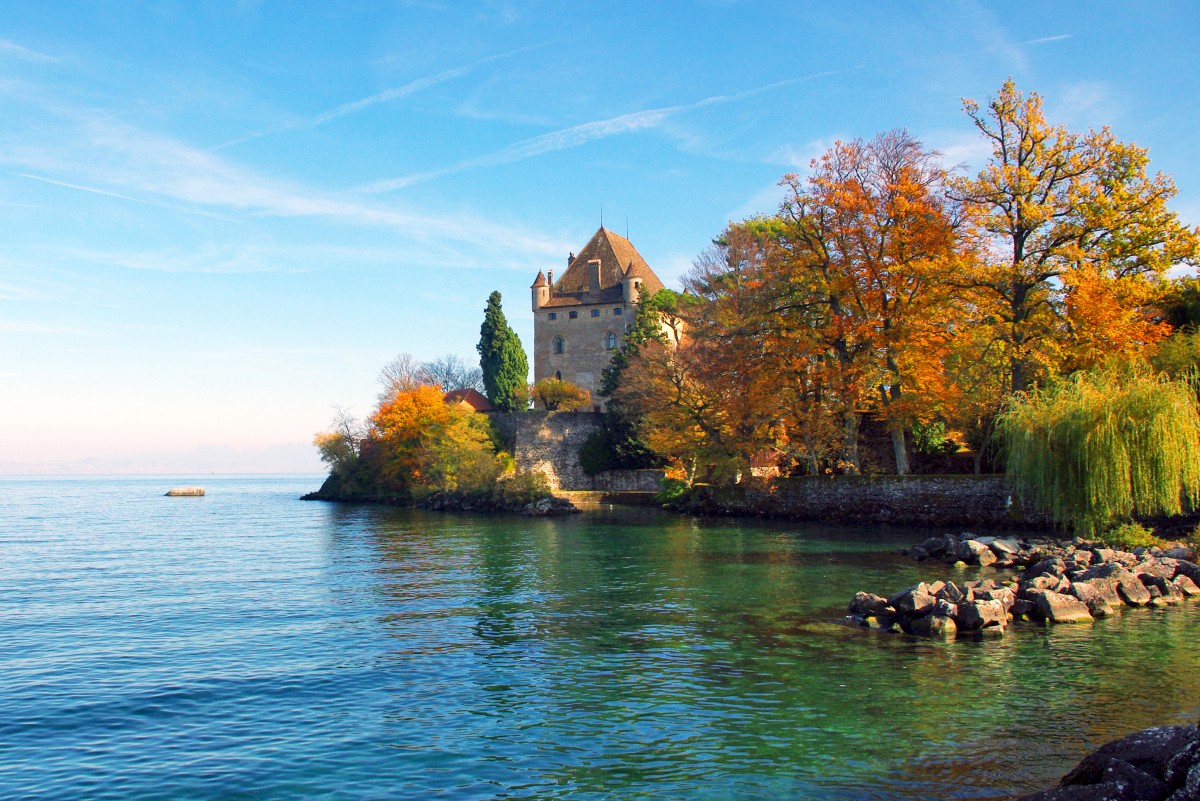
The French Alps include some of France’s most beautiful lakes, for instance:
Lake Annecy, Lake Bourget, Lake Geneva, Lake Aiguebelette, Lac du Sautet, Lac de Serre-Ponçon, Lac du Chevril, Lac du Mont-Cenis, Lac de Castillon, Lac de Sainte-Croix, Lac d’Esparron…
And a multitude of small lakes found in protected areas:
Lac Lauvitel, Lac de l’Eychauda, Lac du Combeynot (Écrins), Lac des Vaches, Lac Long, Lac Blanc, Lac des Assiettes (Vanoise), Lac des 9 couleurs (Queyras), Lac Vert, Lac Noir, Lac du Basto, Lac d’Enfer (Mercantour)…
Main glaciers
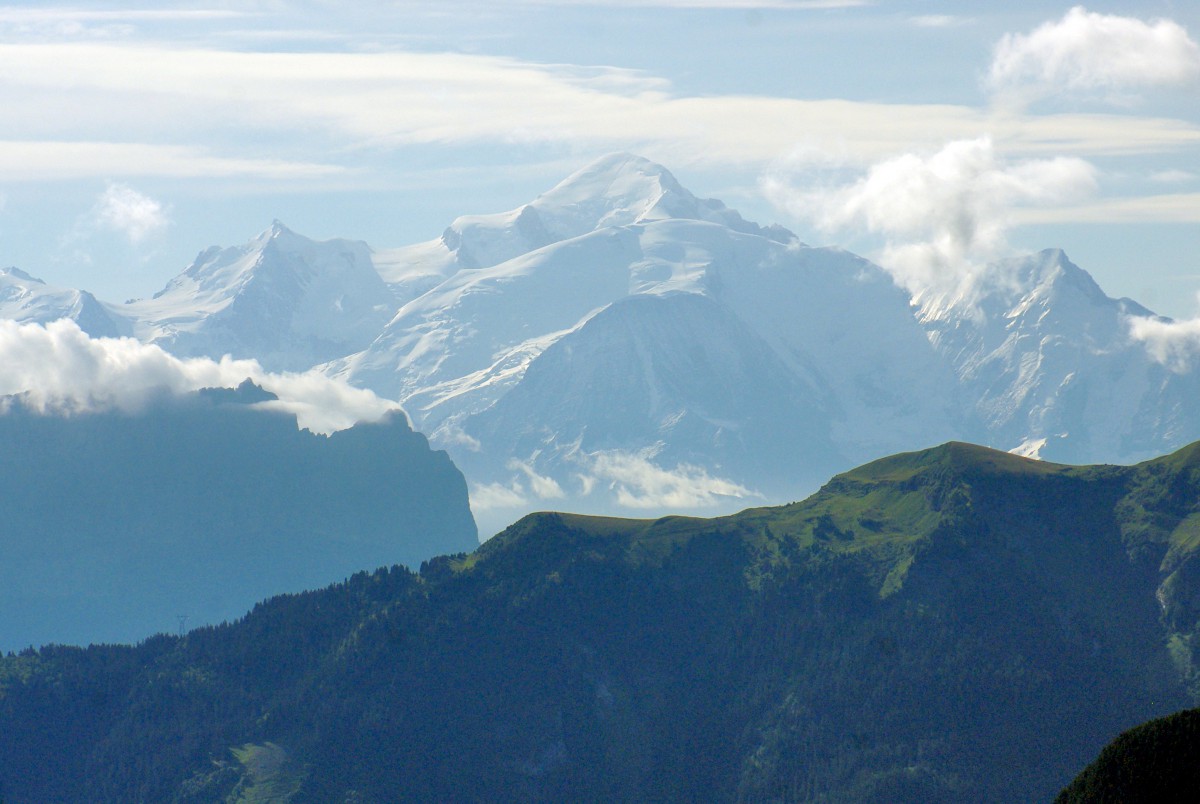
The glaciers of the French Alps are found in four main massifs: Mont Blanc, Vanoise, Grandes Rousses, and Écrins. They cover a total area of 350 km2, and the snow line on the glaciers lies between 2,750m and 2,950m.
Mont Blanc has the only continuous glacier area in France and accounts for a third of the total glacier area in the French Alps. It includes the well-known Mer de Glace, which is the largest glacier in the country (30 km2).
Main cities

Although the highest mountain range in France, the Alps are home to large cities due to the deep and large valleys that separate its different massifs. The French capital of the Alps is Grenoble, a dynamic economic and university centre of 450,000 inhabitants that hosted the 1968 Winter Olympic Games.
In addition, there are other important cities such as Annecy, Chambéry, Gap, Briançon, Aix-les-Bains, Cluses, Thonon-les-Bains, and Albertville.
Overall, the Alps cover a large area and are densely populated in large valleys. 14 million people live in the mountainous region, which is home to cities such as Innsbruck (Austria), Bolzano (Italy), Chur (Switzerland), Grenoble (France), and Aosta (Italy).
In France, the densely populated “Alpine Furrow” (Sillon alpin) is an axis stretching over 330 km from Geneva to Valence, passing through Annecy, Aix-les-Bains, Chambéry and Grenoble.
👉 Explore the incredible French Alps for less with Ski France voucher codes. Book online for the best savings whether you want to stay in the beautiful Chambery or a top-class L’Alpe d’Huez resort.
Protected areas in the French Alps
The French Alps attract many visitors who come to discover one of its many protected areas. The mountain range includes National Parks, Regional Natural Parks, and Natural Reserves.
National Parks
As of 2014, three of the 10 National Parks in France are located in the French Alps.
Vanoise National Park (Parc national de la Vanoise)
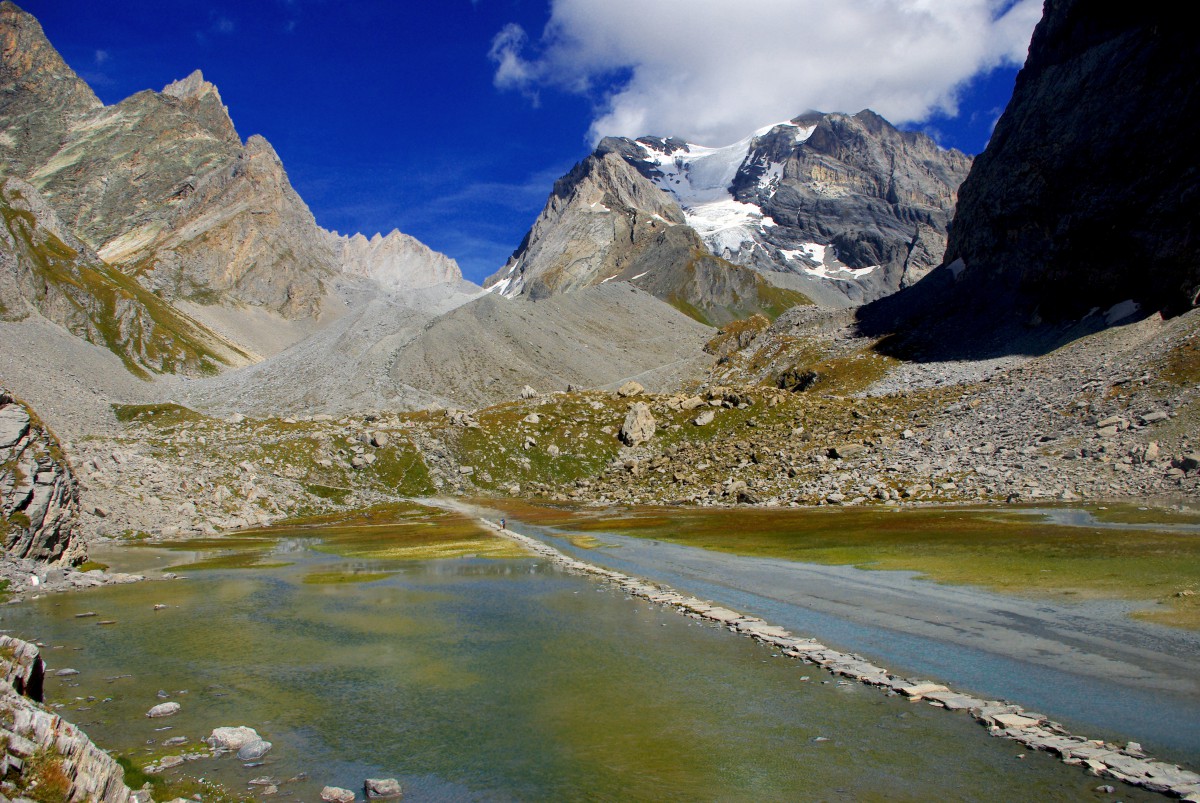
Situated in the département of Savoie, the park protects an area of 1,250 km2 (483 sq mi). It was the first National park created in France (6th July 1963).
Écrins National Park (Parc National des Écrins)
![Pré de Madame Carle © MOSSOT - licence [CC BY-SA 3.0] from Wikimedia Commons](https://frenchmoments.eu/wp-content/uploads/2020/09/Pré-de-Madame-Carle-and-Barre-des-Ecrins-©-MOSSOT-licence-CC-BY-SA-3.0-from-Wikimedia-Commons.jpg)
The park, which was created on March 27, 1973, covers parts of the départements of Isère and Hautes-Alpes and protects an area of 918 km2 (354 sq mi).
Mercantour National Park (Parc national du Mercantour)
In between the départements of Alpes-Maritimes and Alpes-de-Haute-Provence, the park protects an area of 685 km2 (264 sq mi). It was created on the 18th of August, 1979.
Regional Natural Parks
A Parc Naturel Régional (or PNR) covers a rural area of outstanding beauty to protect its scenery and heritage and enforce sustainable economic development. As of 2014, out of the 49 PNRs found in France, 7 are located in the French Alps.
Vercors Regional Natural Park (Parc naturel régional du Vercors)
Situated in the départements of Drôme and Isère, the park protects an area of 2,063 km2. It was created on the 16th October 1970.
Luberon Regional Natural Park (Parc naturel régional du Luberon)
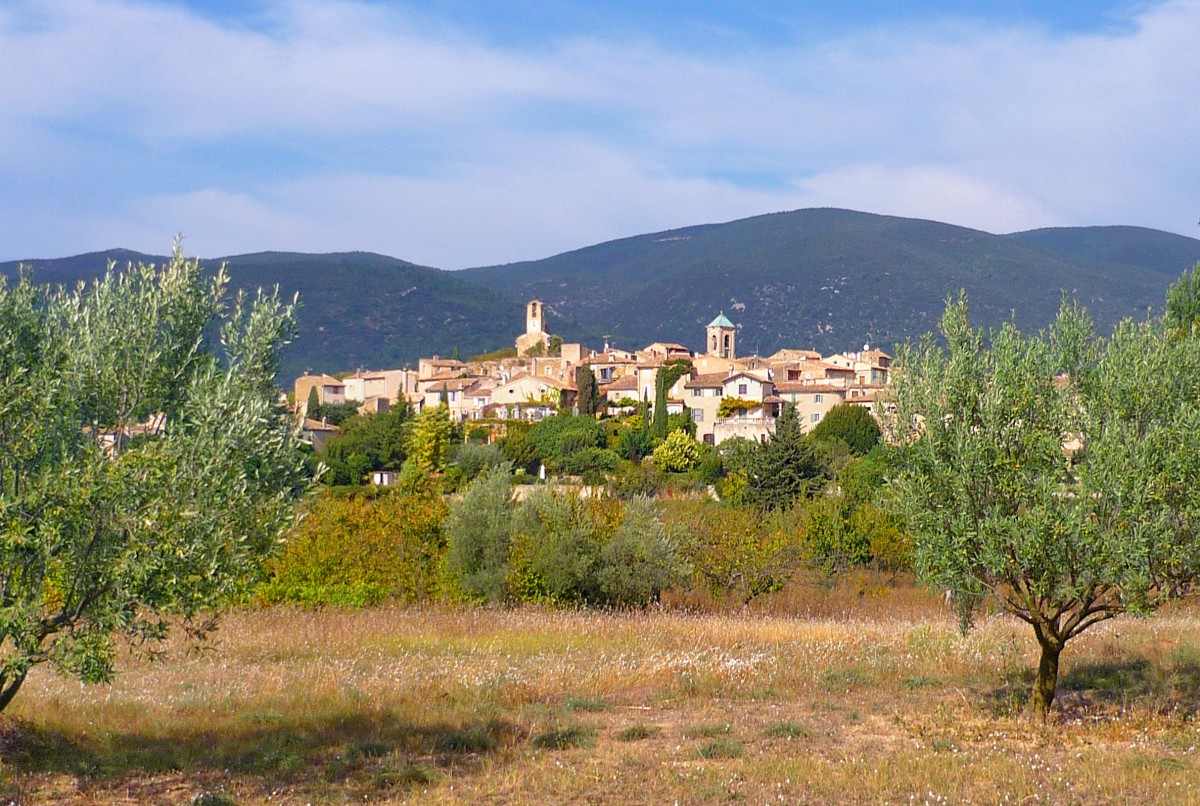
Covering the fringe of the Alps in the départements of Alpes-de-Haute-Provence and Vaucluse, the park protects an area of 1,747 km2. It was created on the 31st of January, 1977.
Queyras Regional Natural Park (Parc naturel régional du Queyras)
![Château-Queyras © patano - licence [CC BY-SA 3.0] from Wikimedia Commons](https://frenchmoments.eu/wp-content/uploads/2020/09/Château-Queyras-©-patano-licence-CC-BY-SA-3.0-from-Wikimedia-Commons.jpg)
Included in the département of Hautes-Alpes, the park protects an area of 603 km2. It was created on the 31st January 1977.
Chartreuse Regional Natural Park (Parc naturel régional de la Chartreuse)
Situated in the départements of Savoie and Isère, the park protects an area of 767 km2. It was created on the 6th May 1995.
Bauges Regional Natural Park (Parc naturel régional du Massif des Bauges)
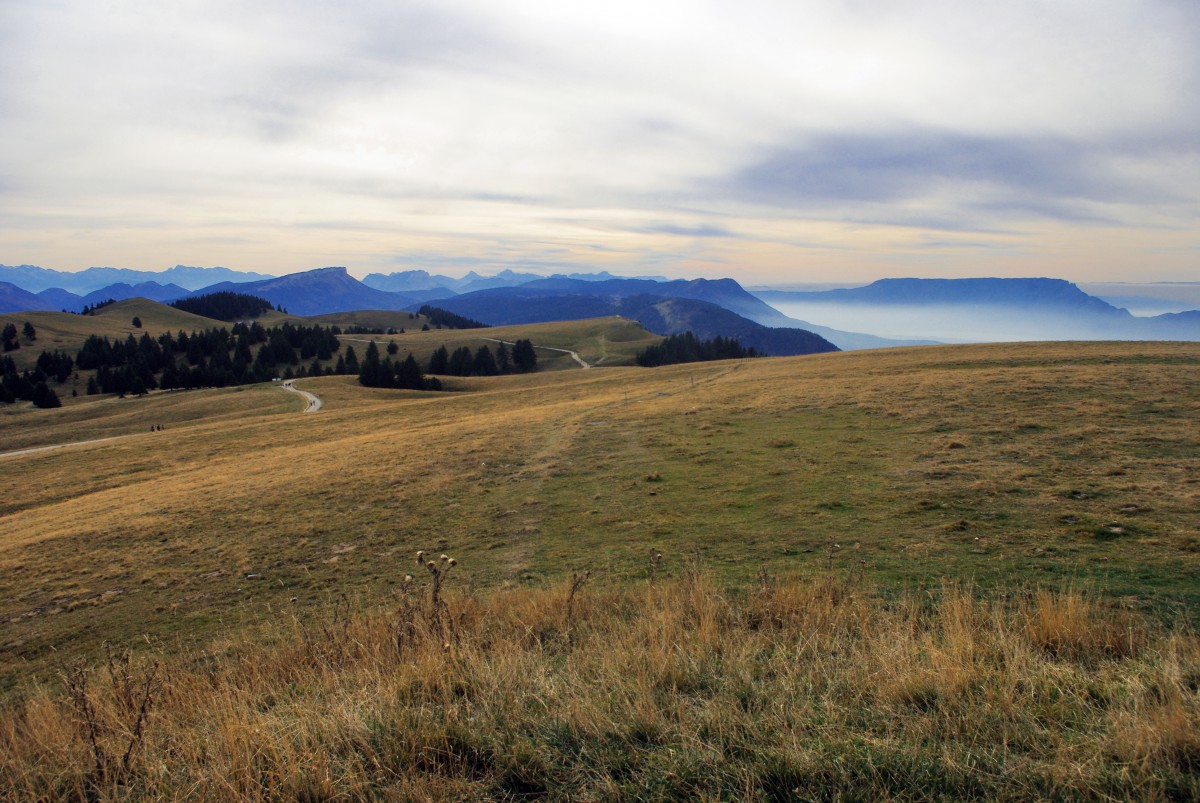
In-between the départements of Savoie and Haute-Savoie, the park protects an area of 900 km2. It was created on the 7th December 1995.
Verdon Regional Natural Park (Parc naturel régional du Verdon)
Situated in the départements of Alpes-de-Haute-Provence and Var, the park protects an area of 1,770km2. It was created on the 3rd March 1997.
Prealps of Azur Regional Natural Park (Parc naturel régional des Préalpes d’Azur)
![Peille © Copyleft - licence [CC BY-SA 3.0] from Wikimedia Commons](https://frenchmoments.eu/wp-content/uploads/2014/08/Peille-©-Copyleft-licence-CC-BY-SA-3.0-from-Wikimedia-Commons.jpg)
Covering parts of the département of Alpes-Maritimes, the park protects an area of 889 km2. It was created on the 30th of March, 2012.
Natural Reserves
Nature Reserves are outstanding protected areas created by the State for endangered plants and vertebrates (fish, reptiles, birds, mammals…).
The French Alps amount to many spread throughout the range, with some protecting well-known sites, for instance:
- Aiguilles Rouges,
- Bout du lac d’Annecy,
- Cirque du grand lac des Estaris,
- Contamines-Montjoie,
- Roc de Chère (Lake Annecy),
- Sixt-Passy,
- Tignes-Champagny,
- Sainte-Victoire (Provence)

Human activities in the French Alps
Traditionally, the French Alps have relied on forestry and cattle farming. More recently, hydroelectric power, technological industries, and particularly tourism activities have threatened this fragile mountain environment.
Forests
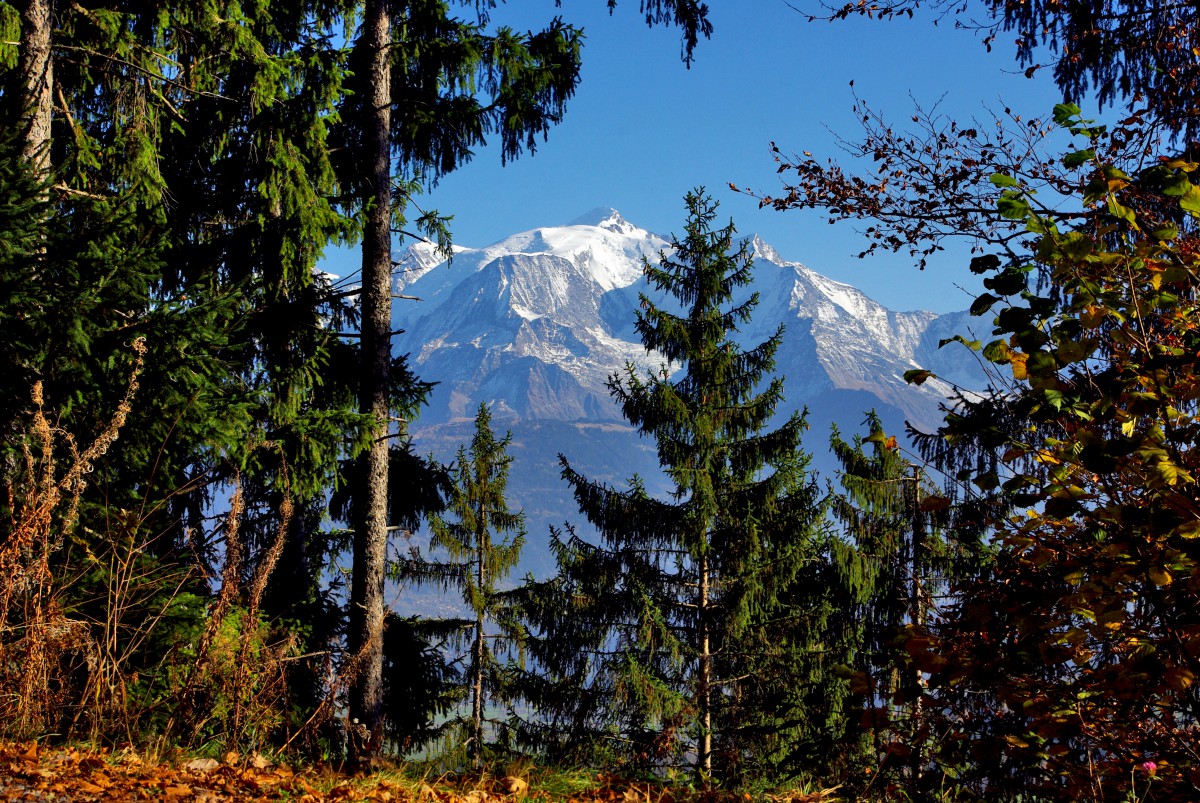
The coniferous forests of the Alps are exploited for pulp, lumber and wood furniture. They are often found on the north-facing slopes, whereas the sunnier south-facing slopes are covered with fields and pastures.
More recently, an intensive reforestation programme has been undertaken, and it is estimated that forests now cover more than a third of all usable land.
Cows and sheep
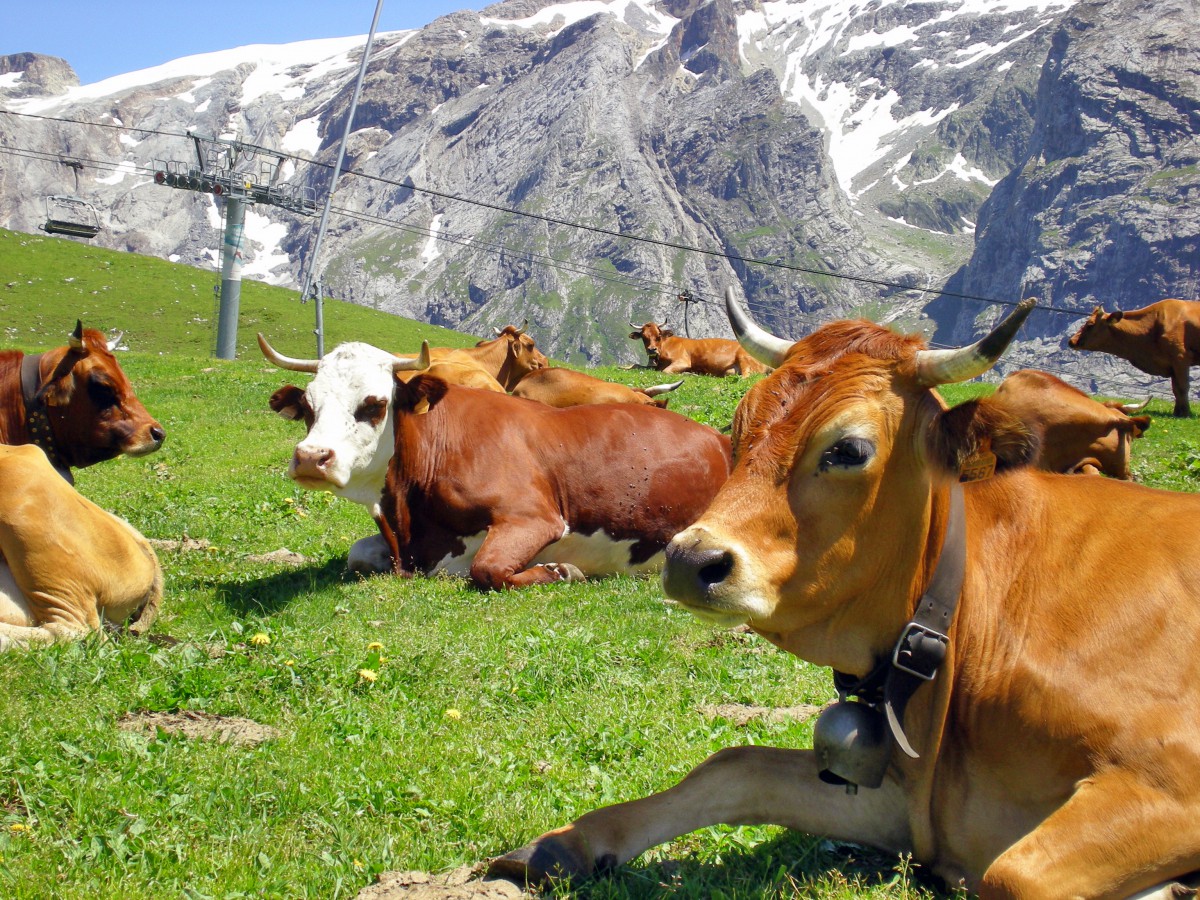
Two main breeds of alpine cows produce gruyère-type cheese: the Tarine and the Abondance. The ringing of the bells attached to their necks is one of the typical sounds heard on a walk in the Alps.
In addition, there are countless mountain sheep in the southern Alps in Provence.
Each spring, the cows and sheep leave the farms to reach the high pastures, where they stay for the whole duration of summer. This is called the transhumance and can be a popular public celebration (such as in Annecy for cows and Saint-Remy-de-Provence for sheep).
Hydroelectric power
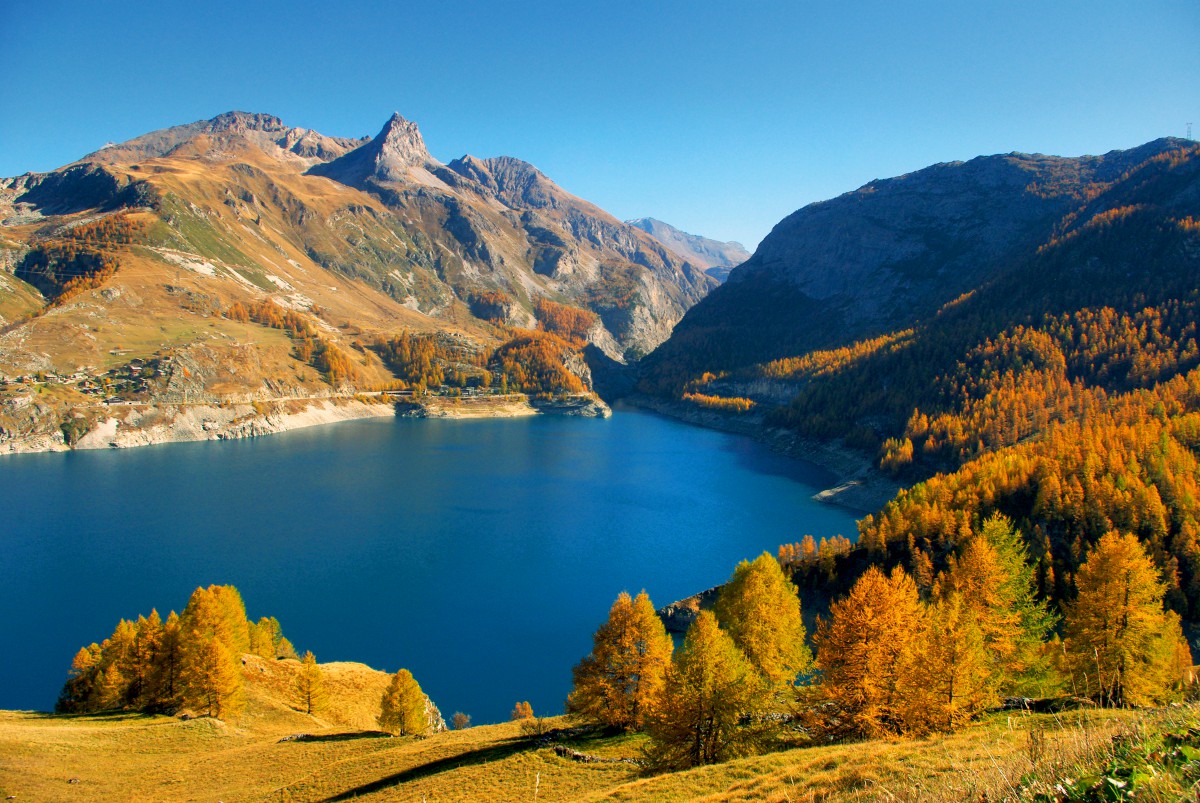
Since the 1950s, enormous reservoirs and dams have been built to use the formidable hydroelectric power from the alpine rivers. Several man-made lakes were created in flooded valleys and villages: Chevril, Roselend, Mont-Cenis, Chambon, Serre-Ponçon, and Sainte-Croix.
Technological industries
Grenoble has become a significant European scientific centre in physics, computer science, and applied mathematics. The self-proclaimed ‘Capital of the Alps’ is one of the leading European cities in high-tech industries, especially biotechnology and nanotechnology.
A combination of research and industry known as the ‘Grenoble model‘ was implemented as early as 1955 with the creation of the Grenoble Center for Nuclear Studies (CENG).
Other technological centres in the French Alps are found in Haute-Savoie and Savoie.
Thermal Baths

The French Alps are reputed for their numerous spa towns, some of which have gained international fame, like Evian.
- Haute-Savoie: Evian-les-Bains, Saint-Gervais-les-Bains, Thonon-les-Bains.
- Savoie: Aix-les-Bains, Brides-les-Bains, Challes-les-Eaux, La Léchère, Salins-les-Thermes.
- Isère: Allevard, Uriage-les-Bains.
- Alpes-de-Haute-Provence: Digne-les-Bains, Gréoux-les-Bains.
- Alpes-Maritimes: Berthemont-les-Bains.
Traditions and cultural identity

The French Alps share a strong cultural identity with the rest of the Alps. This is observed in the traditional culture of farming, cheese-making, and woodworking, which has not disappeared in Alpine villages despite the development of mass tourism.
In fact, since the 1950s, tourism has become the dominant industry, radically transforming the once impoverished area into one of the world’s thriving regions.
Activities and Sports in the French Alps
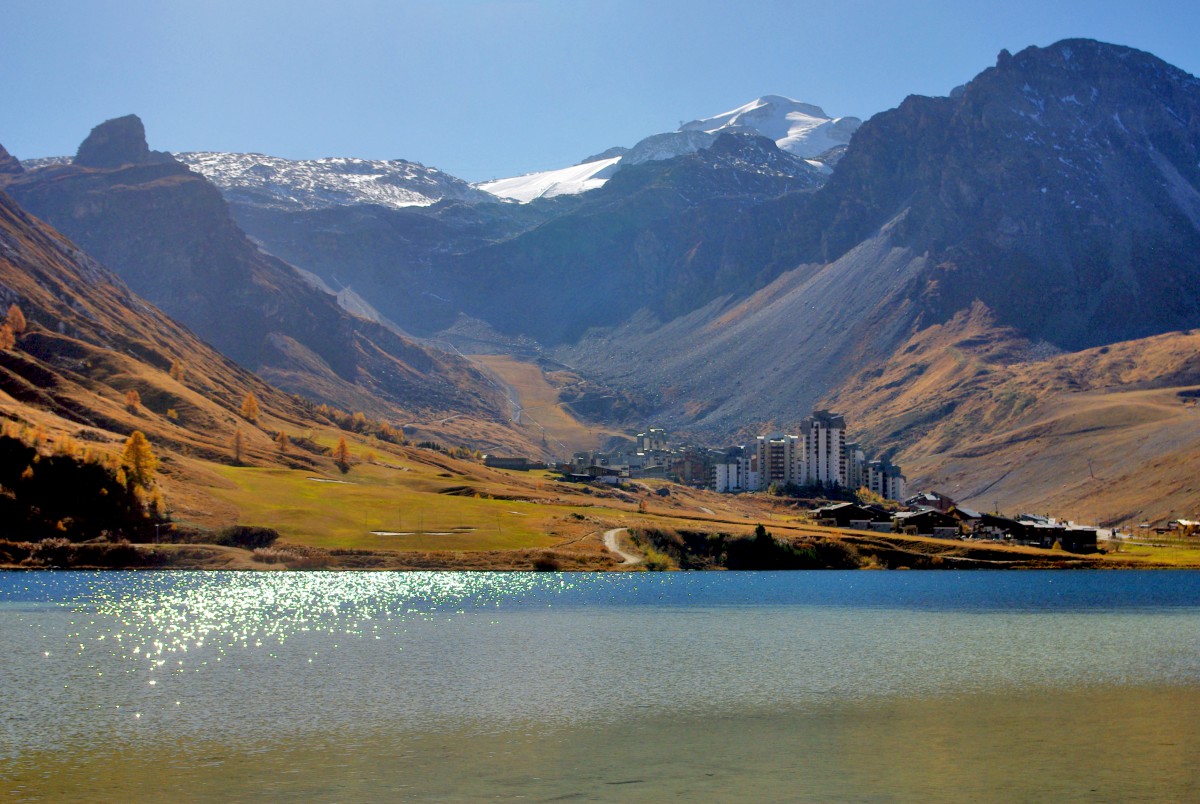
Winter sports
The French Alps rank amongst the largest winter sports areas in the world, with top-class and famous resorts such as Chamonix, Courchevel, Val d’Isère, La Plagne, and L’Alpe d’Huez.
In addition, the region has a strong Olympic history and has organised three Winter Olympic Games, including the very first edition of the competition:
- Chamonix (1924),
- Grenoble (1968), and
- Albertville (1992).
In 2011, Annecy lost the bid for the 23rd Winter Games in 2018 to Pyeongchang, South Korea.
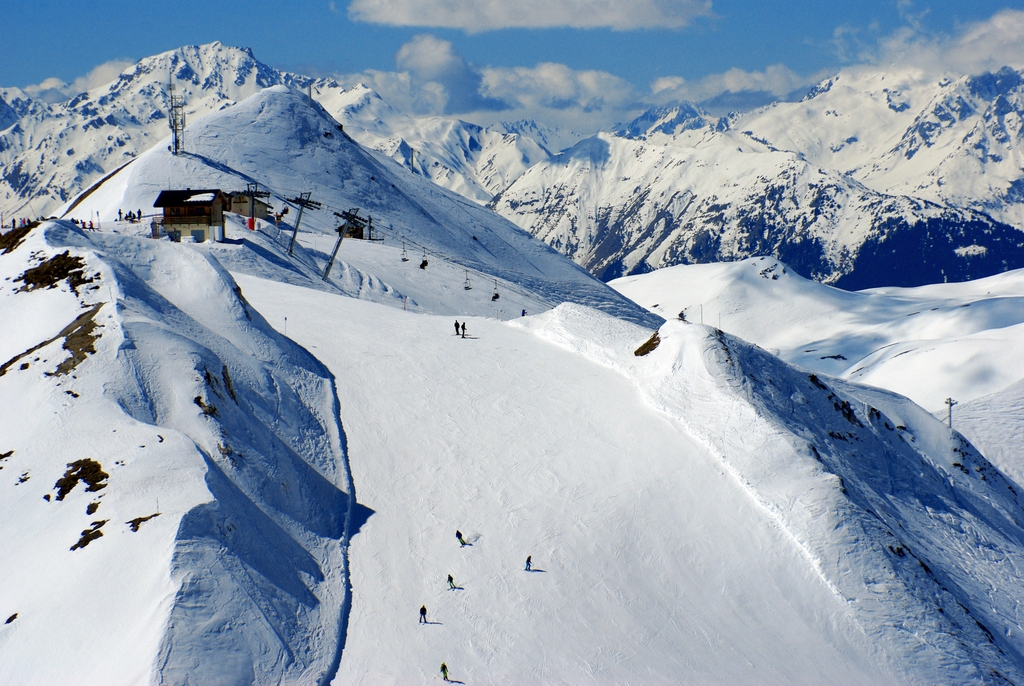
The equipment and facilities provided there since the 1950s offer a wide range of winter sports options such as downhill skiing (ski alpin), cross-country skiing (ski de fond), monoskiing and snowboarding, snowshoeing, and dog sledging.

Gigantic ski resorts in the French Alps
Many individual ski resorts have linked into giant ski domains connecting different villages. Primarily found in the northern Alps, these extensive ski areas are organised into two different forms:
- domaines reliés (linked resorts) are resorts that have linked their ski areas by a network of shared pistes connected by cable cars or chairlifts. Examples of domaines reliés are Portes du Soleil (between France and Switzerland), Les Deux-Alpes, Espace Killy (Tignes and Val d’Isère), Les Grandes Rousses (L’Alpe d’Huez, Allemont), Paradiski (La Plagne, Champagny-en-Vanoise, Nancroix, Les Arcs), Les Trois Vallées (Les Ménuires, Courchevel, Val Thorens, Méribel).
- domaines skiables (skiing resorts) are resorts where you can ski with one ticket but whose ski areas may be accessible by car or coach.
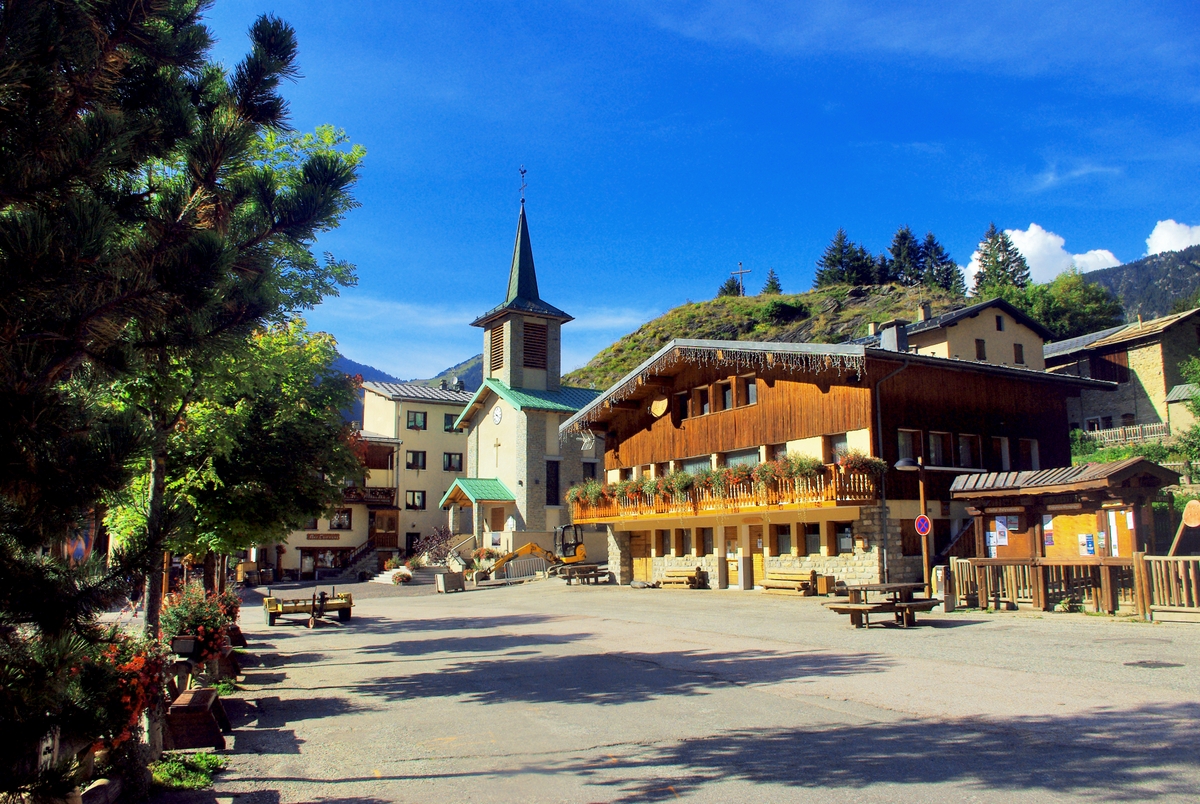
A few ski resorts are also open for summer activities. These mountain resorts enjoy proximity to sites of outstanding natural beauty and include villages such as Chamonix and Saint-Gervais-les-Bains for the Mont-Blanc Massif, and Bourg-Saint-Maurice, Pralognan-la-Vanoise, Champagny-en-Vanoise, Val d’Isère for the Vanoise National Park.
Summer sports and activities

From late spring to early autumn, the French Alps offer a different side of its potential.
In fact, many National Parks and Regional Natural Parks provide many outdoor activities, one of the most popular being walking and hiking.
Walking and Hiking in the French Alps
Unsurprisingly, walking is by far the best way to discover the Alps and their majestic scenery. There are thousands of kilometres of marked paths, including the GR trails, crossing some of the most renowned sites: Mont-Blanc, the Vanoise, the Écrins, the Vercors, the Queyras, the Mercantour, and many other massifs.
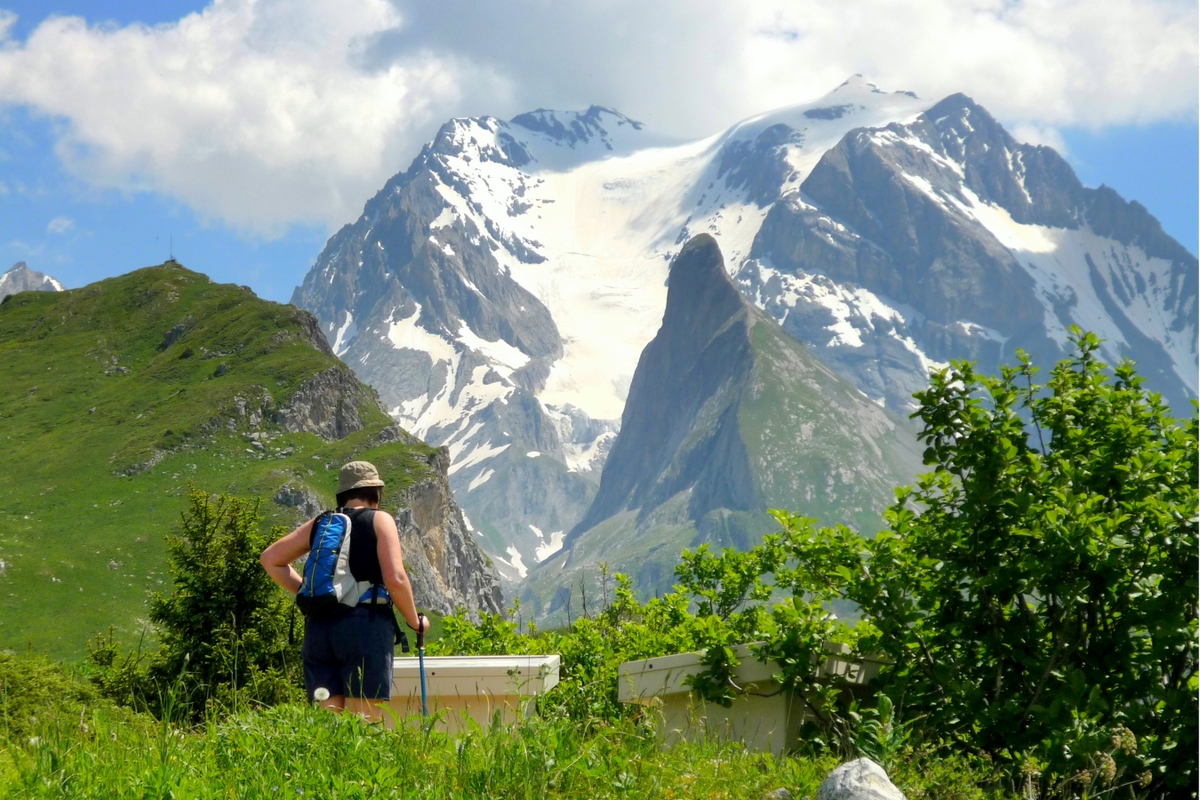
Families will enjoy day walks, while experienced hikers may plan a long itinerary through the passes of the Alps, passing from one valley to the next and occasionally staying overnight in a mountain refuge.
Therefore, the Grandes Randonnées (GR) trails include the famous GR5, which crisscrossed the Alps from north to south, from Lake Geneva to Nice. The Tour du Mont Blanc (TMB) winds around the massif of Mont-Blanc in France, Italy, and Switzerland. The GR55 reveals the best of what is to see in the Vanoise National Park, while the GR54 explores the Écrins National Park.

Apart from walking, numerous popular activities and sports are practised each summer in the French Alps: mountain biking, canyoning, rock-climbing, caving, rafting, canoeing, kayaking, angling, horse or donkey riding… Aerial activities include paragliding (parapente) and hand gliding (deltaplane).
Tourism and main sites
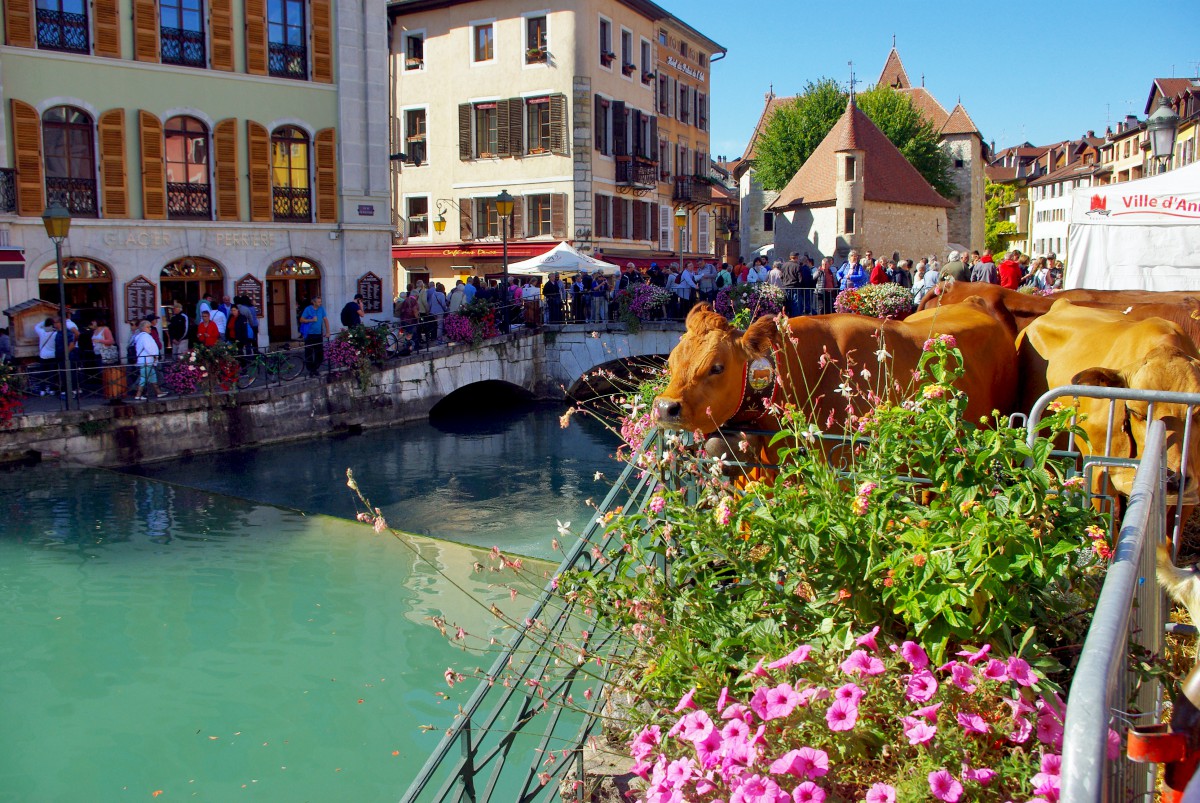
It is estimated that 120 million people visit the Alps each year, 1.5 times the number of visitors to France.
Natural Environment

The three National Parks found in the French Alps (Écrins, Mercantour and Vanoise) attract around 2,000,000 visitors yearly. Along with the Regional Natural Parks, they provide a wide range of sports activities, particularly for ramblers, cyclists and nature lovers.
In addition, other popular mountain sites are the massifs of Mont Blanc, Beaufortain, Aravis, Champsaur, Belledonne, Grandes-Rousses, Chartreuse, Vercors and Mercantour.
Cities, small towns and villages

The French Alps include beautiful towns and villages, some of which have gained international reputation. Here are a few popular sites listed by département:
- Haute-Savoie: Abondance, Alby-sur-Chéran, Annecy, Chamonix-Mont-Blanc, Combloux, Évian-les-Bains, La Roche-sur-Foron, Megève, Saint-Gervais-les-Bains, Sixt-Fer-à-Cheval, Talloires, and Yvoire.
- Savoie: Aussois, Bessans, Bonneval-sur-Arc, Chambéry, Conflans, Saint-Jean-de-Maurienne, and Valloires.
- Isère: Grenoble, Mens, Saint-Pierre-de-Chartreuse, and Vizille.
- Drôme: Buis-les-Baronnies, Die, Montbrun-les-Bains, and Nyons.
- Hautes-Alpes: Briançon, Embrun, Gap, Guillestre, La Grave, Montmaur, Saint-Véran, Serres, and Vallouise.
- Alpes-de-Haute-Provence: Annot, Barcelonnette, Castellane, Colmars, Digne-les-Bains, Entrevaux, Forcalquier, Les Mées, Manosque, Moustiers-Sainte-Marie, Riez, Saint-Paul-sur-Ubaye, Seyne, and Sisteron.
- Alpes-Maritimes: Grasse, Le Boréon, Saint-Martin-Vésubie, Sospel, Tende, Vence, and the hilltop villages of Coaraze, Gourdon, Lucéram, Peille, Peillon, Péone, Sainte-Agnès, and Saorge.
- Var: Bargème, Cotignac, Saint-Maximin-la-Sainte-Baume, Seillans, and Tourtour.
Feudal Castles and Fortifications
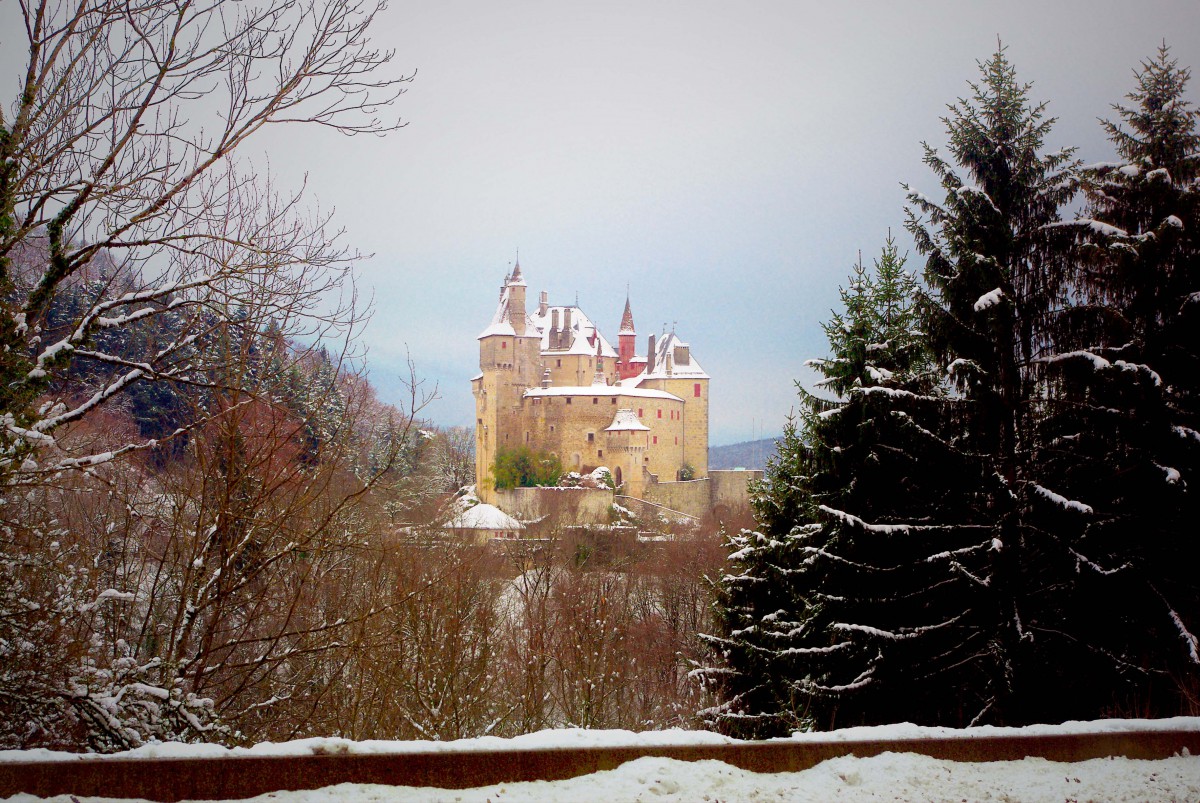
Set in a border area since the Middle Ages, the French Alps have been the stage for countless military operations. Indeed, from Lake Geneva to Nice, a significant number of feudal castles and fortifications can be observed and sometimes visited, for instance:
- Haute-Savoie and Savoie: Annecy, Aix-les-Bains, Chambéry, Chantemerle (La Bâthie), Duingt, Menthon-Saint-Bernard, Miolans, Montrottier, Thorens-Glières, Yvoire, and the forts in the Maurienne Valley.
- Isère and Hautes-Alpes: Briançon, Grenoble, Le Bourg d’Oisans, Mont-Dauphin, and Sassenage.
- Alpes-de-Haute-Provence, Alpes-Maritimes and Var: Allemagne-en-Provence, Authion, Château-Arnoux-Saint-Auban, Entrecasteaux, Entrevaux, Esparron-de-Verdon, Gréoux-les-Bains, Seyne-les-Alpes, and Sisteron.
Cathedrals, Churches and Abbeys

Many renowned churches and abbeys draw visitors through their doors:
- Hautecombe Abbey on the western shore of Lake Bourget,
- the churches of Annecy ‘the Rome of the Alps’,
- Sainte-Chapelle of the Ducal Palace in Chambéry,
- the Romanesque cathedral of Sisteron,
- the Gothic cathedrals of Embrun and Forcalquier,
- Collegiate Church Notre-Dame in Briançon.
Without forgetting, many chapels scattered across the high pastures of the Alps.
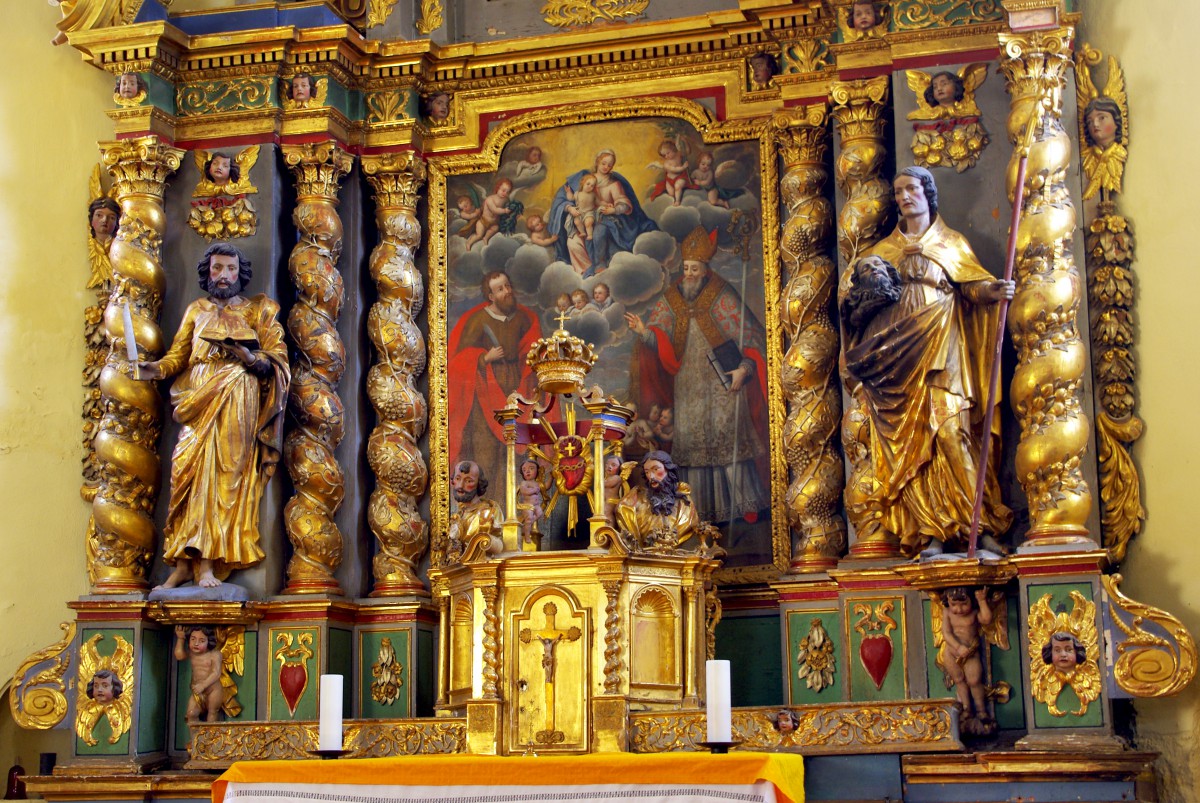
Moreover, the Tarentaise Valley in Savoie is famous for its beautiful Baroque churches that house rich altarpieces. Many churches in the historical province of Savoy are dominated by an onion-shaped spire (Bozel, Combloux, La Roche-sur-Foron, Talloires, Thônes…)
Local artefacts

Visitors to the French Alps will bring back the following artefacts:
- woodcarving from Queyras.
- teddies representing a marmot, a chamois or a St. Bernard dog.
- wooden walking cane from Savoie can be sold in souvenir shops with an engraved edelweiss flower and walking stick badges.
- bells that recall those attached around the neck of mountain cows.
- earthenware from the Provençal Alps, particularly the faïence de Moustiers.
- cheeses from Savoie: reblochon, beaufort, abondance and tomme de Savoie are the most popular.
- Wines from Savoie, Clairette from Die (Drôme) and the green coloured génépi liqueur.
- olive oil from the Provençal Alps.
- honey from the Provençal Alps, particularly miel de lavande (lavender) and miel toutes fleurs de Provence (Provençal flowers).
Did you like what you read? If so, please share it on Facebook or Twitter!
PIN IT for later!
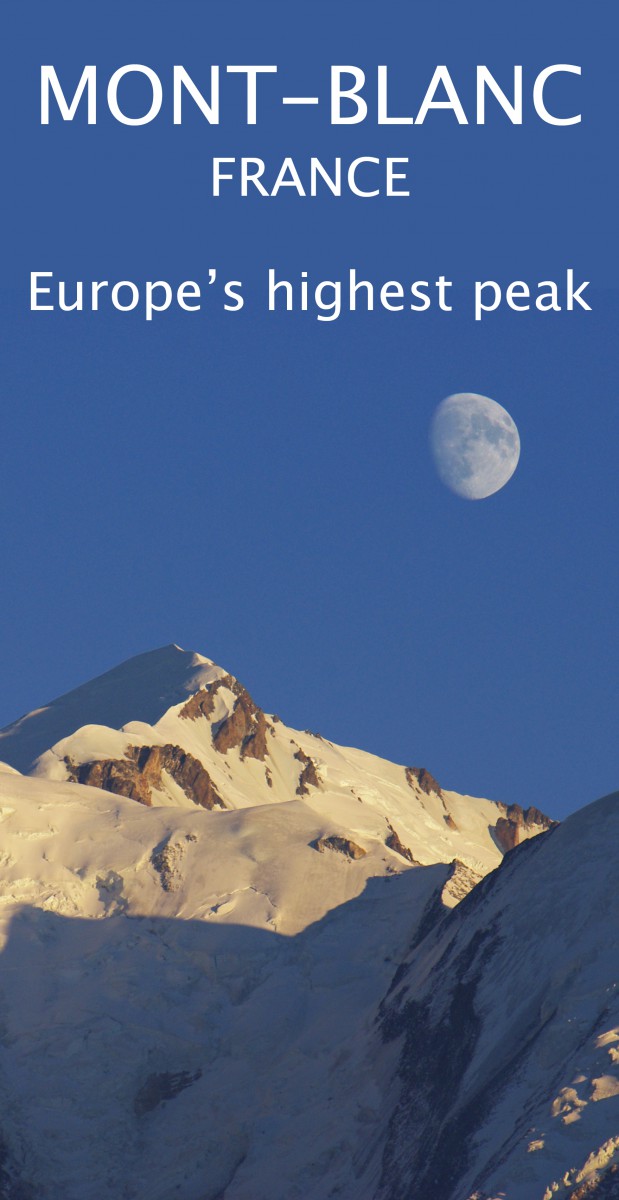
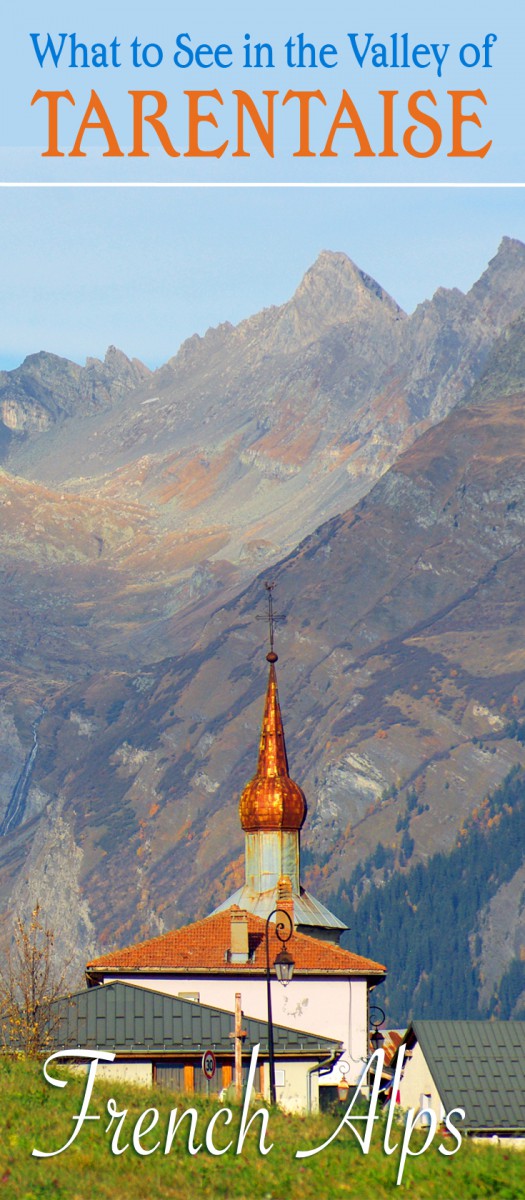
Read more about the French Alps in French on our blog Mon Grand-Est.

